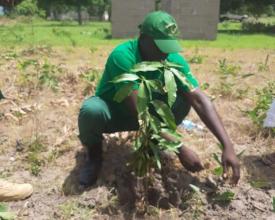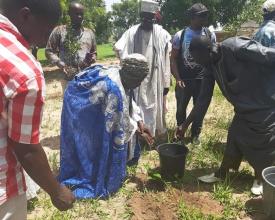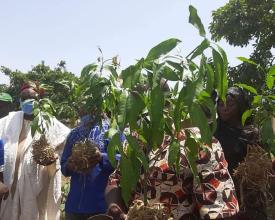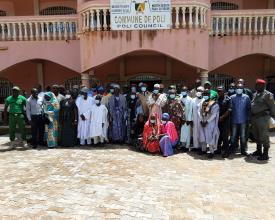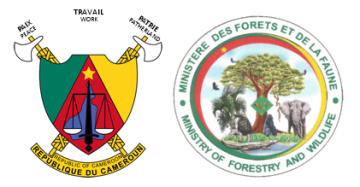
Restoration of the northwestern banks of the Faro National Park
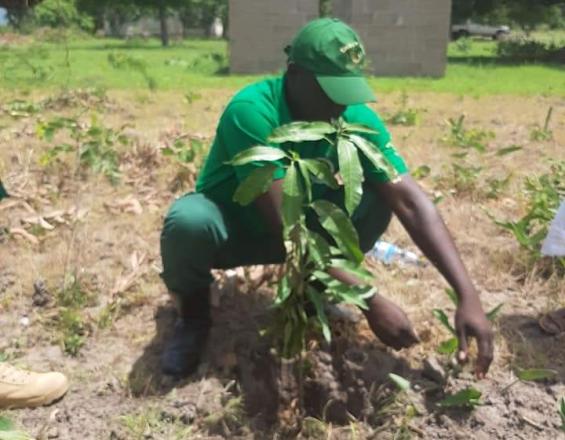
Since the advance of the agricultural front and the expansion of villages on the outskirts of Faro National Park in particular, people have modified natural ecosystems and used their resources. However, this modification is often synonymous with environmental degradation: intensive use of land, soil and water pollution, loss of habitats and biodiversity ... Restoring land and reintroducing trees to landscapes, including existing forests, helps provide forest products, conserve biodiversity, improve hydrological flows and soil fertility, and limit soil erosion . To succeed in restoring the banks of the Faro National Park, the population must be made aware of the importance of conserving the area, limiting the expansion of crops on the banks and relocating agricultural plots over a perimeter of 50 meters from the course of water and reforest the banks of the park with agroforestry species beneficial to the populations.
Context
Challenges addressed
The climate of the area is characterized by heavy annual rainfall leading to increasing erosion, silting up of rivers and more recently flooding. Floods, alternating with periods of drought, cause damage to humans and their property and increase the risk of crop failures. The majority of the population on the outskirts of Faro National Park live below the poverty line and depend heavily on natural resources. However, the availability of ecosystem services has just been reduced by unsustainable land use and their importance for water regulation, flood protection and supplying people inside the park is not. hardly recognized by the forestry administration. The safeguard of this watercourse would allow navigation again.
Location
Process
Summary of the process
The consultation platforms created have enabled us to bring together each other's opinions by raising awareness and collecting information from residents and local elites, in order to map the degraded areas to be restored. ; To make local actors understand the advantage of safeguarding the banks of the Faro and Déo course.
Building Blocks
The transhumant conference
The transhumant conference is a consultation platform that brings together local and foreign transhumant pastoralists in order to discuss the resolution of conflicts between breeders - farmers, breeders - gamekeepers and wild animal breeders.
Enabling factors
The strengthening of collaboration between institutions has made it possible to build a solid basis for dialogue and to put in place lasting resolutions.
The participation of Nigerian transhumant herders also made it possible to establish frank collaboration between the countries in terms of transhumance management.
Lesson learned
The possibility of implementing concrete actions to resolve the problem of overgrazing, the creation of grazing areas, water points, and the facilitation of the sedentarization of foreign breeders.
Stakeholders Forum
Essential elements for the conservation of biodiversity and ecosystem services for sustainable development are the equitable participation of stakeholders and the organizational development of local management associations. The project has set up a stakeholder forum bringing together all the sectors involved in the park to identify areas of ecological, economic and social interest for which there is a will of the populations to protect and manage them. Its mission is to manage conflicts related to the exploitation and conservation of natural resources, to promote the capacity building of actors, to encourage the emergence of research in the sustainable management of natural resources. This forum has the technical support of the project for their organizational development as well as for technical and financial management, including the monitoring of the rules for the use of their resources. These rules of use were drawn up in a participatory manner for each buffer zone. To do this, a series of consultation sessions was organized for each village.
Enabling factors
Benefits drawn: participatory process for revising the park's development plan; participatory ecological monitoring and surveillance.
Security of tenure: the natural boundaries of the park give it protection and the buffer zone is easily demarcated.
Legal consultation framework: recognition of their status and functions by ministerial acts.
Lesson learned
In a context where the land use plan is defined, local authorities must be involved in discussing future land use in order to come to a legally recognized agreement that will be accepted and honored in the long term.
Regarding the rules of sustainable management in the buffer zones, the challenge was to develop rules and sanctions in accordance with the forestry legislation in force and applicable at the local level. For this, a series of consultation sessions was carried out to allow the population to become more familiar with the law in terms of conservation and management of natural resources.
Due to their lack of knowledge in these matters, users often perceived the reduction of their natural resources.
Role of ecosystem service in the restoration process
Despite the strong dependence of the local economy on natural resources, the concept of ecosystem services is new to most of the actors intervening in the periphery of the Faro National Park.
In addition, due to the lack of knowledge about natural processes, the loss of these resources has been noted, but their decline has often not been attributed to current practices. Existing communal development plans focus on sectors such as water, agriculture and infrastructure, without taking into account the importance of ecosystem services. A meeting and training enabled stakeholders from different sectors to discuss the challenges of conservation of ecosystem services and increase their knowledge in the field.
In order to improve the process of drawing up plans and building the capacities of decision-makers at the local level, several workshops were organized with the aim of familiarizing actors with the “ecosystem services” approach and its application during the process. planning.
Enabling factors
- Participatory approach integrating all stakeholders.
- Focus on the usefulness of ecosystem services for the economic development of the region.
- Existence / creation of a good level of knowledge of natural processes (water cycle, soil fertility, etc.).
Lesson learned
A major challenge in the context of sensitization and training of actors / decision-makers is the fact that there are large gaps in basic knowledge concerning natural processes (water cycle etc.) and climate projections. Therefore, it was necessary to train decision-makers not only on the steps of integrating ecosystem services into plans, but also on techniques to improve the sustainable management of natural resources.
Therefore, the technical support process takes a long time. • In addition, popularization of documents on ecosystem services will be an asset.
Impacts
This reforestation of the banks will make it possible to:
Environmental impacts:
1. Limit water pollution by pesticides;
2. Strengthen the fight against erosion through soil stabilization and the capture of nutrients contained by tree roots in depth;
3. Restore aquatic life (marine habitats damaged through protection and zoning);
4. Improve the nitrogen supply of the soil;
5. Promote the resettlement of endangered or extinct species;
Socio-economic impacts:
1. Forest degradation and loss directly hamper sustainable economic development and affect the livelihoods of local populations, compromising poverty reduction efforts, food security, biodiversity conservation as well as their resilience to impacts of climate change.
Beneficiaries
- Around 90,000 people, ie a proportion of around 2,000 women;
- 03 townships made up of 29 villages;
- Village development committee;
- The Faro National Park Conservation Service;
Sustainable Development Goals
Story
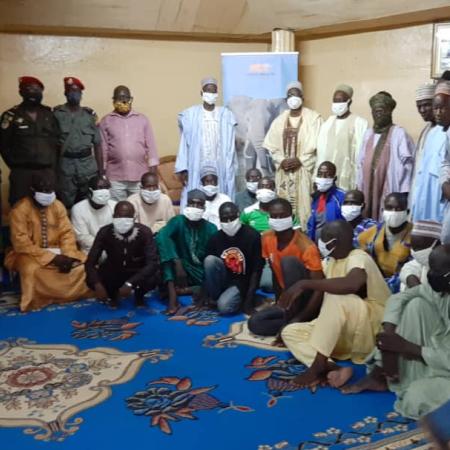
For almost 04 years, we have been involved and closely monitoring the concerns of the Faro National Park conservation service and local populations. Each time, the same problem arises, namely the management of the land around the Faro National Park.
In order to contribute to the resolution of this problem of land use and its degradation, numerous awareness meetings have been initiated to enable the population to understand the importance of conserving the banks of the Faro. And through our technical and financial partner African Wildlife Foundation (AWF), we were able to carry out the land use plan which allowed us to define the areas to be restored and reorient the areas intended for agriculture far from the banks of the river. the protected area. All the populations concerned have agreed to free up the spaces and this has enabled us to strengthen the collaboration between the conservation service and the neighboring populations.
With this awareness of the population, we hope for continuity in the Safeguarding and conservation of the shores of the Faro National Park.
